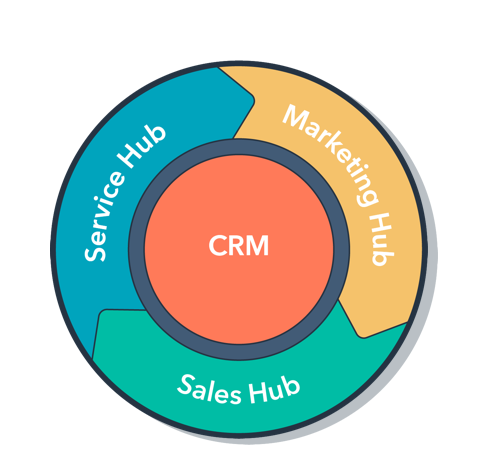Where do companies in sensor and measurement technology stand in 2020? According to the AMA Association for Sensor and Measuring Technology, the industry is expecting a decline in turnover of four percent for the second quarter. "Since the national and international sales markets have collapsed massively due to the corona pandemic, this will have a delayed effect on the manufacturers of sensors and measuring technology," says Thomas Simmons, Managing Director of the AMA Association for Sensor and Measuring Technology. The situation is further aggravated by the fact that important leading trade fairs such as Sensor + Test, scheduled for the end of June, are cancelled, postponed or held in digital form.
So companies would be well advised to continuously and independently develop their digital footprint using a setup of their own touch points and opportunities to generate new prospects and interact with leads. In this way they create a basis to permanently show their solutions, devices and product and create the necessary amount of leads, which the sales team can then use for personal contact.
Table of contents
- 1. Create buyer personas
- 2. Define the Buyer's Journey
- 3. Coordinate marketing and sales activities
- Marketing Automation for Sales, Marketing and Service
In contrast to private purchases, B2B marketing does not focus on individual end consumers, but rather on a group of several people who are involved in a purchasing process from specific roles. The person in the initial contact is called the initiator. He or she is part of the buying center typical for large companies. It consists of the roles initiator, user, decision maker, gatekeeper, influencer and purchaser. In order to be successful in digital marketing with the inbound methodology in B2B, all persons in the buying center must be considered in marketing. Automated marketing campaigns help to address the role bearers with specific content. A CTO has different requirements and questions than the CMO or even the CEO. The following tips help to build up strategic B2B marketing in the digital environment of sensor and measurement technology.
1. Create buyer personas
The higher the acquisition costs, the larger the circle of people involved and thus to be convinced. Which persons do you have to convince in order to close the sale of a measuring instrument? The answer to this question helps to focus the planned marketing measures and leads directly to the topic of the buyer persona. In contrast to target groups, the Buyer Persona stands for a semi-fictitious depiction of an ideal customer based on real data and selected assumptions regarding demographic background, behavioral patterns, motivation and goals. In the core, it is worked out which goals and wishes a contact pursues and which challenges he might currently be confronted with. The solution to this is provided by the product presented with marketing measures. These can be arguments such as planning security, technical security, increased efficiency or precision. In addition, a manager has more freedom of decision than an employee. How much the buyer persona decides for itself and to whom it reports is interesting, among other things, for the strategy in later negotiations. In addition, department heads pursue different professional goals and face different challenges than ordinary employees. This strongly influences the choice of topics for your content offerings.
One more tip: Experience shows that the decision-making processes in owner-managed companies with a long family tradition are different from those in companies that are set up as public limited companies.

You can find instructions on how to create Buyer Personas at HubSpot.
Typical for the industry is the sale of solutions to various industries. How do you communicate the features and benefits to the outside world in a way that is appropriate for the industry? By checking the terminology you use in your daily work, simplifying it if necessary and consciously integrating it into the context of the target industry. With this perspective, it is all the easier to move from an internal perspective to the situation of the ideal customer.
2. Define the Buyer's Journey
The Buyer's Journey maps the decision-making process that the buyer personas will most likely go through. The focus is on the buyer's perspective from the initial contact to the conclusion of the purchase. This process is divided into three phases. At the beginning is the awareness phase. Here a potential customer identifies a business-relevant or activity-related problem or develops a need to change the current situation. One speaks of the reflection phase when the person has actively dealt with the problem or the need and begins to search for solutions. Finally, he or she will choose a way to satisfy the need or to solve the identified problem.

Picture ©HubSpot
As a provider, you can actively support future customers on their way from problem identification to decision. If you know the persona and the phase, it is possible to offer suitable content formats such as blog posts, videos, tutorials, test reports or comparison tests - each of which matches the section of the Buyer's Journey on which the contact is currently located. A technical data sheet or an animation of your solutions are just two of the many digital measures to support the future buyer or the buying center with suitable content during the phases. Search engine optimized content draws the company representatives directly to your site. In the awareness phase, generic content helps to serve the mostly still generally formulated search terms. If you succeed in taking the customer perspective, the traffic on websites and landing pages will increase. Infographics or social media posts increase attention. In the beginning it is about responding to the need or problem in a visually appealing way and with simple messages. Subsequently, video demos, checklists or test reports show you as a useful and trustworthy companion.
3. Coordinate marketing and sales activities
Even if no sales department has made direct contact so far, you can use the consideration phase to provide valuable information at the right time to lay the groundwork for the sales employees' later work. The decision phase can be accompanied by marketing and sales activities in parallel. Whether the sales employees pick up the phone directly and display their call results directly in the CRM or prefer to make contact via LinkedIn and note it later in the CRM, is to be decided individually or depends on the setup in the company.
 Picture ©HubSpot
Picture ©HubSpot
With marketing automation solutions such as HubSpot, the previous interactions of the buyer persons with the upstream marketing offers are individually available to the sales staff. This means: Page impressions, downloads, video streams, opening rates of mailings and further information form an individual setup, which the sales staff can access and start an individual approach to potential customers. You can also see which persona in the buying center has been inactive with the company up to now. Information gaps can be closed through concrete inquiries and information can be manually incorporated into the CRM within the company profile. The sales software of HubSpot offers numerous features to optimize productivity - similar to the Marketing Hub.
- Automated contact via personalized follow-up e-mails
- Create email templates for recurring emails for use by the entire sales team
- Alert function when potential customers open emails or click on links
- Tool for online booking of appointments
- Live chat function with storage of data in CRM
- Create deals and sales pipeline
- Filter function for companies and persons based on turnover
Marketing Automation for Sales, Marketing and Service
With the help of marketing automation tools and a strong lead management strategy, companies can create digital campaigns via pre-defined workflows to accompany the buyer personas in their individual buyer's journey. They help to collect data and analyse the visiting behaviour of their prospects via integrated reports and dashboards.
With the appropriate tool, the prospective customer behaviour can be analysed using various key figures, such as views and clicks, and an understanding of their requirements can be created. With the help of Marketing Automation and its possibilities, campaigns can be planned and implemented in a targeted manner.




-1.webp)




